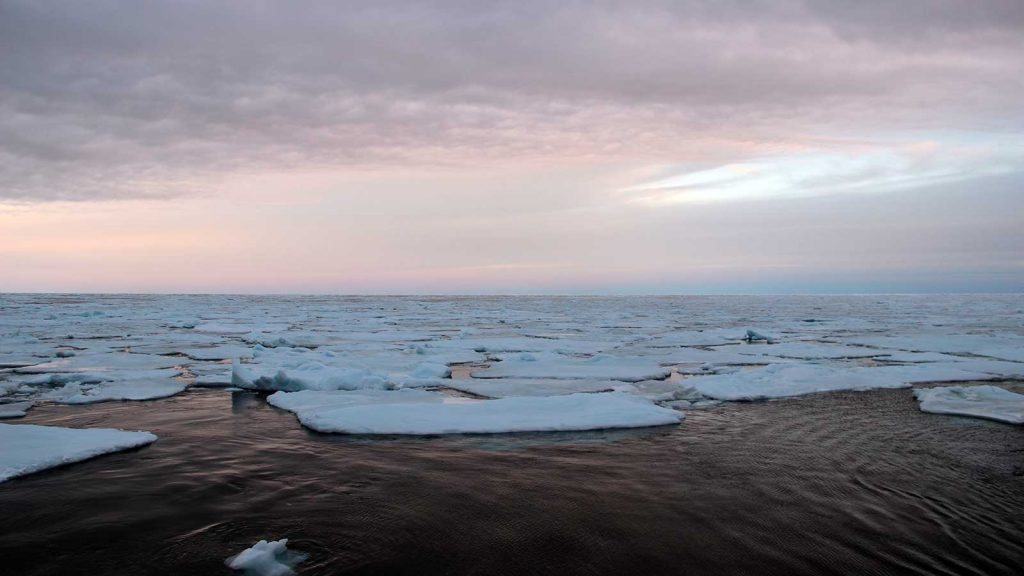
This morning we reached the edge of the sea ice. (Photo by Chris German, ©Woods Hole Oceanographic Institution)
We had a quiet weekend as we sailed north about 600 miles from northernmost mainland Norway, across the Barents Sea, and then up the east side of the Svalbard Archipelago. We passed very close to the islands of Nordaustlandet and Kvitoya as we crossed 80°N late afternoon yesterday (Sunday), but it was so foggy that my photographs showed only gray, even though I was pointed in the right direction to see land.
While we were in shallow water late Sunday, we took the opportunity to test some of our equipment. Jill McDermott, who is here as part of our NASA-funded NUI science team, collected some water samples to make sure she is ready to start measuring methane concentrations in the deep ocean when we finally reach our work area—a key part of our search for seafloor venting. The day ended with Kevin Hand from NASA Jet Propulsion Laboratory, and the other scientist here as part of our NUI team, giving everyone on the ship a presentation on why he is interested in this cruise. In short, he hopes to learn all he can that might be useful in the exploration of other ice-covered oceans elsewhere in our solar system.
This morning (Monday), we woke to see our first sea ice. We haven’t encountered anything so severe yet that it is slowing us down—we are currently progressing at 6-7 knots, down from our open-ocean speeds of 12 kts., but still better than the 3 kts. we are anticipating for the thick ice still to come.
Once we get into international waters, we will continue north and then turn east to skirt around to the northern edge of Russian territory to get to our work area. As we progress north and east, and as the days get shorter, we will adjust the ship’s clock so that we will be on the same time zone as Moscow. That way, our ever-shrinking daylight hours coincide with the normal workday on the ship that spans from breakfast, starting at 7:30 a.m. to dinner at 5:30 p.m.

